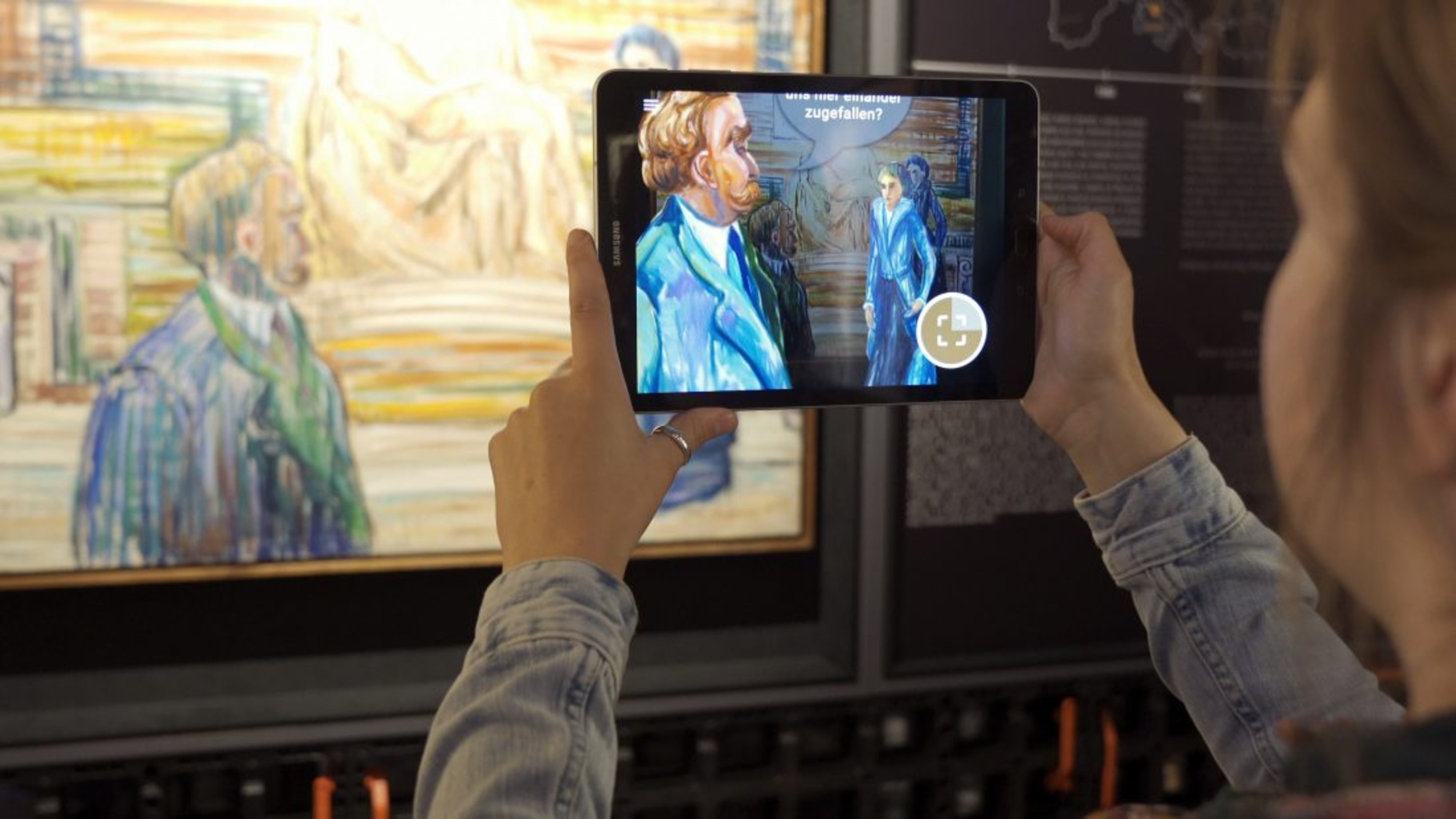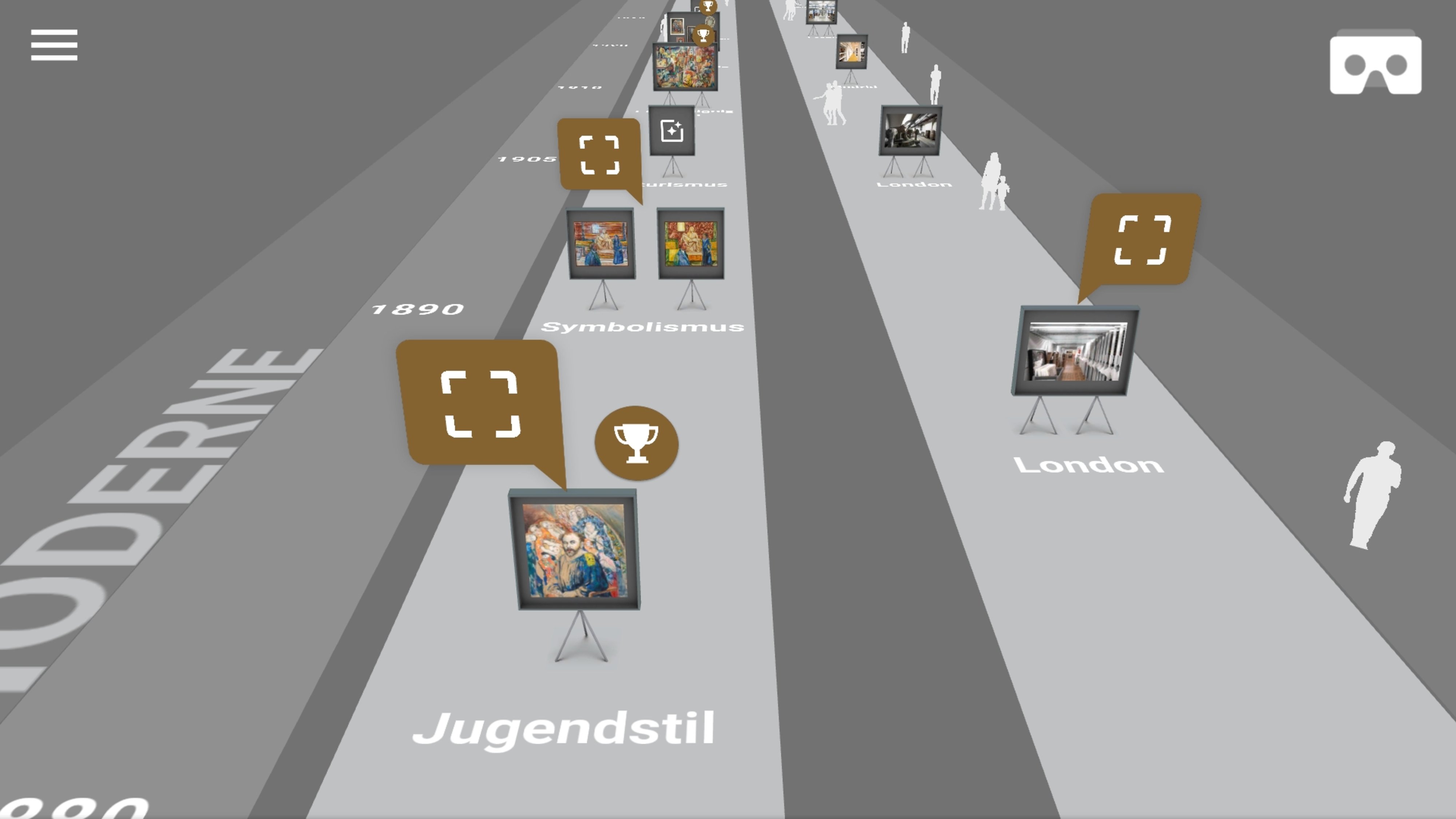One of the most fascinating trends in current software and app development is the term “augmented reality” or “AR”. The idea behind this is to enrich our view of reality – using recognition software to offer additional information and content for existing products, for example. At a time when smartphones have long since become a mass phenomenon, this topic has become one of great importance for the art world as well.
Zott Artspace is breaking new ground with their “KAIROS. The Right Moment” exhibition, providing a new and innovative way for art lovers to access works with a modern smartphone app. The app takes the place of the traditional audio guide, automatically recognizing a work of art and providing information on each piece in the form of text, audio and video. In the spirit of “serious gaming”, the app also includes games, which offer an interactive experience for visitors.
We interviewed Dr. Hermann Granzer, head of project development and CIO of Pointout GmbH, an mSE Solutions company.
- What makes this development so special, what distinguishes it from other educational apps?
HG: We use an original “game framework” (Unity) for a professional business app. At first, this may sound unconventional and almost overdesigned, but it offers several advantages: it’s largely platform independent (from the beginning we wanted to operate on iOS and Android), has a focus on excellent user experience, and offers a wide range of opportunities for AR/VR/3D. Banking on this concept was not without risk, but after the first prototype it proved very convincing.
- What was particularly challenging from a developer’s point of view?
HG: The lack of know-how regarding Unity was problematic – we had a steep learning curve to master. This was a little atypical for mSE but is actually normal for an IT system house. We brought in outside experts: Specifically, the Munich-based media agency Südwind, which is owned by Andreas Lukas, provided significant support. With their strong background in film and photography, they were able to assist with the user-friendly placement and presentation of artistic content. In the absence of an outstanding user experience, a new app such as this one can unfortunately fail quite quickly.
- Which of mSE’s strengths does this app play to?
HG: Right from the onset, the art experts (i.e. the Artspace team) and the technicians (i.e. my developers) worked in close collaboration. And quite importantly, I myself am someone who speaks and understands both these fields quite well.
The development was also atypical in that I quickly took on the role of project manager for both sides, and actually became the driving force for the project – normally the development is “driven” by the contractor. This meant that the development was not merely the result of carrying out orders. From the very beginning, we participated in brainstorming, in discussions regarding the business model, and in optimization of operability/usability.
We drew this up as an agile project from the onset. The advantages offered by the agile model became apparent very early on. This quickly eliminated any reservations stemming from the previously used waterfall model.
Since most of the development work has been completed, I have now handed the project over to my colleague in marketing, Raphael Schmidt (and thus introduced a “real” product owner outside of pure development). This way, the team that creates the content can itself make the decisions on how to proceed. Cross-training and learning-on-the-job are very important to mSE.
- Apps are on the rise. Are apps soon going to be part of the basic infrastructure of every company? Which trends do you see in this area?
HG: Company blogs like Yammer, networking tools such as Xing, messenger systems like Signal or Slack, Teams as a replacement for Skype, and so on and so forth. Apps don’t replace classic tools such as email, Excel, PowerPoint, but rather complement and optimize these.
Trends I find promising:
Enterprise apps that are also primarily used in and developed for the corporate environment Serious gaming – presenting content in a playful way. We’ve also used this approach with the Kairos exhibition app, which playfully draws attention to particular content – or “information nuggets”, i.e. small, informative, easily accessible units of information Focus: apps with dedicated, focused functionality, not overloaded feature monsters. The important thing here: clear interfaces between the apps used, including progressive web apps, which run on streamlined, web-based technology and are easily maintained using the web approach – and yet can still run offline
Thank you very much for your time!

